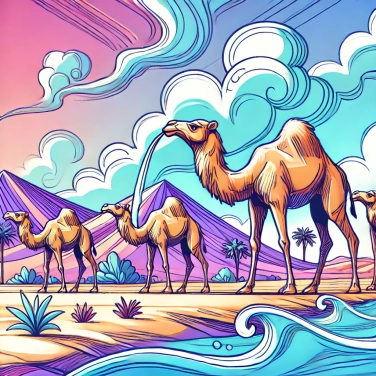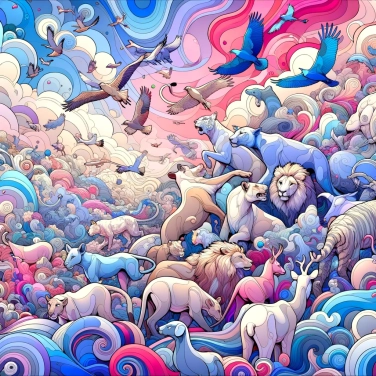Camels can survive without water for weeks thanks to their ability to store large amounts of fat in their hump, which is then converted into energy and water.

Camels are champions of water conservation thanks to remarkable adaptations. Firstly, their hump does not store water, but rather reserves of fat that they slowly burn to obtain energy and metabolic water during dry periods. Their thick fur drastically limits water loss through sweating by protecting against the extreme heat of the sun. Their nostrils can close completely to prevent moisture loss and avoid sand entry. Even their wide, flat feet contribute by allowing them to walk better on burning sand, thereby limiting their daily energy expenditure. Finally, the camel has this impressive ability to lose up to about 30% of its body weight in water without major issues, while most animals would already be in serious trouble.
The camel has ultra-efficient kidneys capable of maximizing urine concentration to avoid losing water unnecessarily. As a result, its urine is dense, thick, and very dark, limiting water loss. Additionally, its intestines recover almost all the water contained in its food, making its droppings very dry. Even its breathing is optimized: its nostrils trap some of the moisture from its breath, further reducing water loss. Finally, the oval-shaped red blood cells of camels are more resistant to severe dehydration than ours, ensuring normal functioning even in cases of significant water deficiency.
The camel has quite a trick for conserving its water: it simply lets its body temperature vary according to the weather. This means that, unlike us, it hardly ever uses water to regulate its heat by sweating. Specifically, the camel's body can fluctuate from almost 34 °C to 41 °C without any issues. As a result, this greatly limits water loss through sweating. It only starts to sweat when it gets really, really hot. In short, this super flexible internal thermostat allows the camel to go a long time without drinking a single drop. Not a bad trick, right?
Camels adopt several effective behaviors to cope with their desert environment. For example, they rest during the hottest hours of the day and prefer physical activities during cooler times, such as early in the morning or late in the evening. They also turn their bodies towards the sun, thereby reducing their exposed surface area and limiting sweating. Some stand for an extended period, allowing air to circulate around their bodies and better regulating their temperature. Another nice detail: camels tend to group together to share shade, thus reducing their direct exposure to the scorching sun. These complementary behaviors help them avoid wasting too much water during hot periods.
Camels mainly eat water-rich plants, such as cacti or moist vegetation, which allows them to obtain a good part of their daily water intake directly from their food. They also consume plants that are often salty or spiny, which other herbivores avoid, thanks to their thick and resilient lips; this gives them access to even more hidden water resources. By slowly digesting these tough plants, they maximize water absorption and nutrients, minimizing losses through urine or feces. In short, their special diet allows them to extract maximum water where many other animals would see hardly any.
Contrary to popular belief, the camel is not native to Africa but to North America, and its prehistoric ancestors were already migrating to other continents millions of years ago.
The humps of camels do not contain water but fat, which allows them to produce energy and water during their metabolism in cases of famine or prolonged dehydration.
The unique oval shape of camel red blood cells allows them to circulate more efficiently in the blood, even when the animal is severely dehydrated, thereby ensuring optimal oxygenation of the body.
A thirsty camel can drink up to 100 liters of water in just 10 minutes to quickly restore its water reserves.
The nostrils can close to prevent water evaporation, while the double eyelids serve to protect the eyes from dust and sand, thereby significantly reducing bodily water loss.
Contrary to popular belief, a camel's humps do not contain water directly but rather store fat. These reserves are converted into water and energy when food and water are scarce.
Although both species have exceptional survival capabilities, the dromedary (one hump) is slightly better adapted to very hot and dry climates, while the Bactrian camel (two humps) is more suited to the cold and dry climates of Central Asia, with slightly different physiological adaptations.
A camel can drink up to 100 liters of water in just a few minutes, effectively storing this reserve for several weeks without requiring additional hydration.
Camels have an exceptional tolerance to dehydration. They feel thirst much later than humans, as their bodies have developed mechanisms that allow them to maintain vital functions for a long time without experiencing an immediate need to drink.

No one has answered this quiz yet, be the first!' :-)
Question 1/5